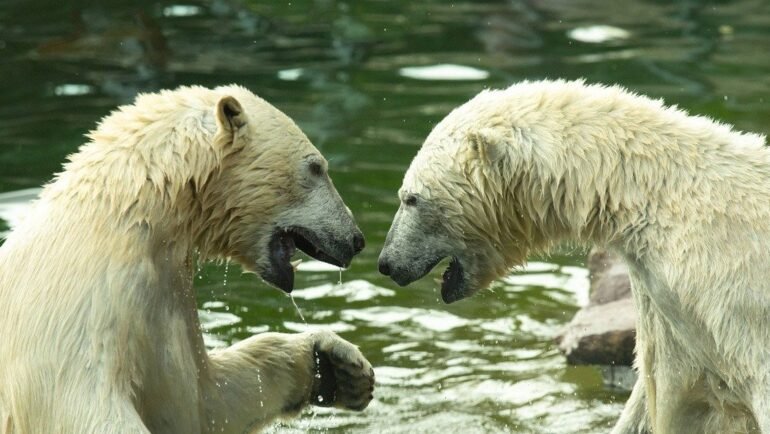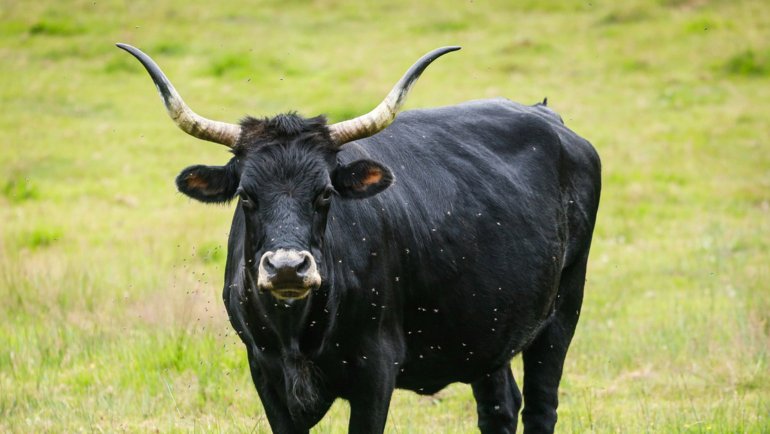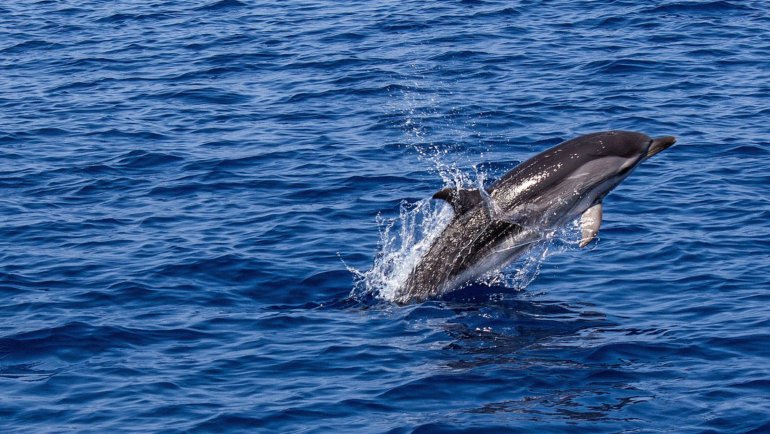In a world filled with fake images, it becomes not so easy to know what to believe anymore. But we are here to testify that purple does exist in the animal kingdom, and you can trust that the 12 animals on this page really are purple animals (and they look quite incredible).
Dive into the fascinating world of purple animals, where striking hues and vibrant shades of violet, lavender, and amethyst come to life. The animal kingdom is a treasure trove of color, and purple is no exception. From the depths of the ocean to the lush rainforests, purple animals can be found in a variety of ecosystems, showcasing their mesmerizing beauty and distinctive characteristics.
Join us on this journey of discovery as we unveil the secrets of these stunning purple animals!
12 Purple Animals: Overview
- Purple Nudibranch
- Ochre Sea Star
- Purple Climber Crab
- Violet-Backed Starling
- Yellowstriped Fairy Basslet
- Pacific Purple Sea Urchin
- Violet Ground Beetle
- Magnificent Sea Anemone
- Spanish Shawl
- Orchid Dottyback
- Purple Harlequin Toad
- Violet Sea Snail
Purple Animals: Pictures and Facts
Purple Nudibranch
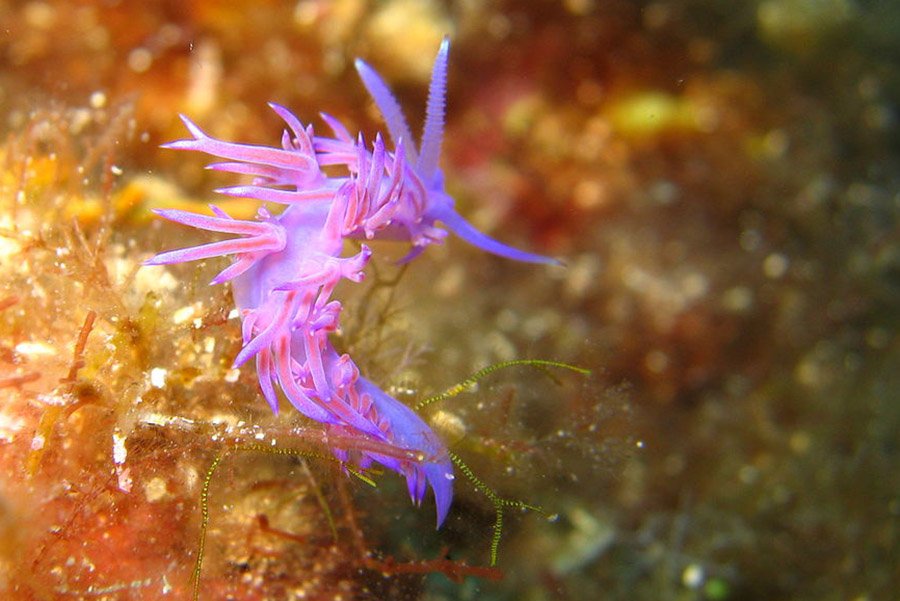
- Scientific name: Flabellina affinis
- Type of animal: Mollusk
- Where found: European Atlantic Ocean, Mediterranean Sea
The purple nudibranch, scientifically known as Flabellina affinis, is a striking sea creature that is sure to leave you in awe of its vibrant colors and unique appearance. These small marine gastropods belong to the family Flabellinidae and are typically found in the Mediterranean Sea, the Atlantic Ocean, and the English Channel.
Measuring between 3 to 5 centimeters in length, the purple nudibranch exhibits a stunning violet-purple hue, contrasted by delicate orange or red cerata, the finger-like projections on their dorsal side. The cerata, which contain branches of the digestive gland, also serve as a defense mechanism. When threatened, the nudibranch can release a toxic substance from the tips of the cerata to deter predators.
Despite their eye-catching appearance, these small creatures are known for their reclusive nature and can often be found hiding amongst rocks or in crevices. They feed primarily on hydroids, a type of marine invertebrate, which they consume using their toothed radula. The purple nudibranch is a hermaphrodite, meaning they possess both male and female reproductive organs, and can lay eggs in spiral-shaped clusters.
Ochre Sea Star
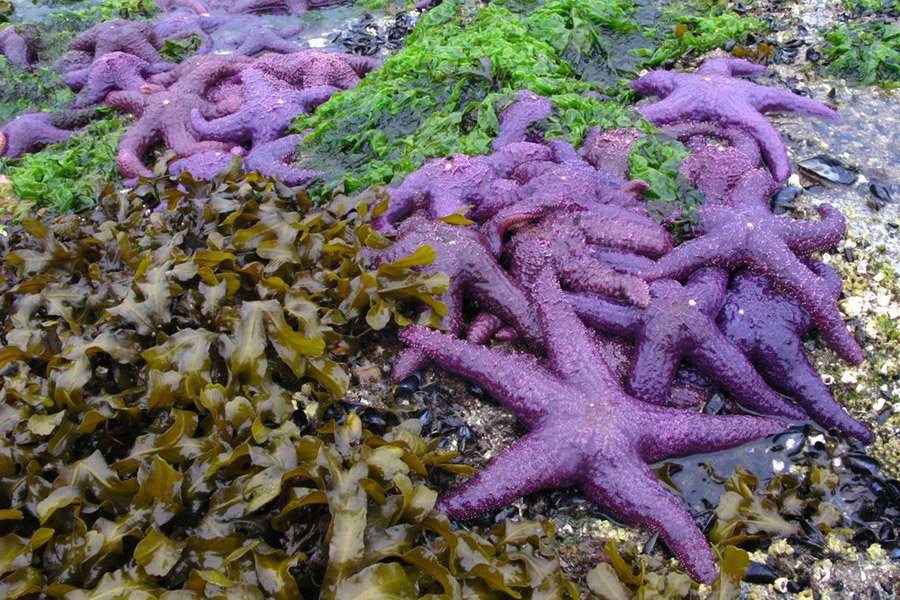
- Scientific name: Pisaster ochraceus
- Type of animal: Echinoderm
- Where found: Pacific Ocean
The ochre sea star, scientifically known as Pisaster ochraceus, is a captivating marine invertebrate that is well-known for its vibrant colors, which can range from purple to orange and brown. These colorful creatures belong to the family Asteriidae and are predominantly found in the intertidal zones of the Pacific coast of North America, stretching from Alaska to Southern California.
Ochre sea stars can grow up to 20 centimeters in diameter and typically have five arms, although they can occasionally have four or six. Their rough, spiny surface is an adaptation to deter predators, while their tube feet aid in locomotion, adhesion to surfaces, and catching prey.
Ochre sea stars are voracious predators, feeding primarily on mussels, barnacles, and snails, and play a crucial role in maintaining the biodiversity of their ecosystems.
These sea stars have an extraordinary ability to regenerate their limbs if they are damaged or lost. This regenerative power not only helps them recover from injuries, but also provides an additional defense mechanism against predators. Ochre sea stars reproduce both sexually and asexually, with separate male and female individuals releasing sperm and eggs into the water column during spawning season.
Purple Climber Crab
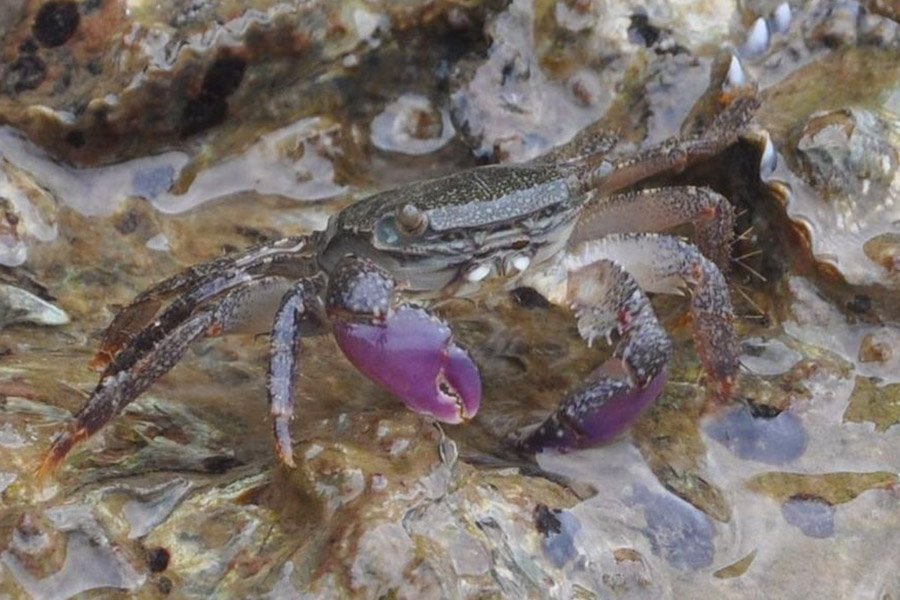
- Scientific name: Metopograpsus spp.
- Type of animal: Crustacean
- Where found: Coasts of the Indo-Pacific Ocean
The purple climber crab is a fascinating species of crab belonging to the Grapsidae family. These eye-catching crabs are mostly found in the intertidal zones of the Indo-Pacific region, including the coastal areas of Southeast Asia and the northern coast of Australia. The purple climber crab is aptly named for its vibrant purple color, which provides camouflage among the rocks and corals in its habitat.
Adult purple climber crabs have a carapace width of approximately 3-4 centimeters, making them relatively small in size. Their slender and elongated legs are designed for climbing and navigating through the rocky intertidal zone. The crabs are omnivorous and opportunistic feeders, consuming a varied diet that includes algae, detritus, and small marine invertebrates.
Purple climber crabs are known for their agility and impressive climbing skills, which help them evade predators such as fish and birds. Additionally, their strong pincers allow them to defend themselves effectively against potential threats.
Violet-Backed Starling
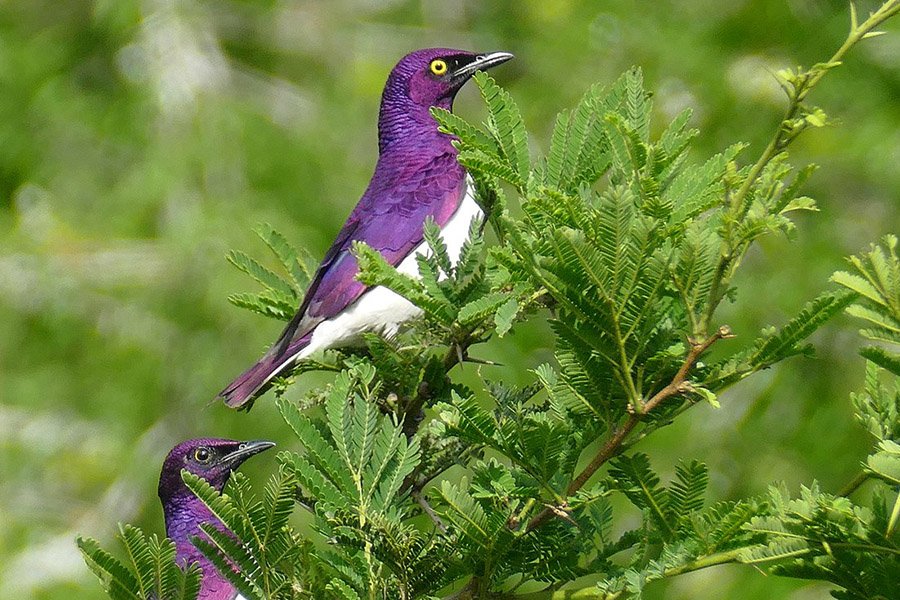
- Scientific name: Cinnyricinclus leucogaster
- Type of animal: Bird
- Where found: Africa
The violet-back starling, also known as the amethyst starling or plum-colored starling, is a strikingly beautiful passerine bird belonging to the Sturnidae family. Native to sub-Saharan Africa, the violet-back starling inhabits woodland, savannah, and bushveld areas, where it can easily find its preferred food of fruits and insects.
The species is sexually dimorphic, meaning males and females exhibit distinct physical differences. The male’s stunning iridescent purple plumage, which appears metallic, stands out against the female’s predominantly olive-brown feathers. Both sexes have a yellow eye-ring and a pale bluish-white iris.
Violet-back starlings are a social species, often forming flocks that roost together in trees during non-breeding seasons. The breeding season, which varies depending on location, sees these starlings nesting in tree cavities or among dense foliage. The female typically lays 2-4 eggs, which she incubates for about 14 days before the young hatch.
Although the violet-back starling faces habitat destruction and fragmentation due to human activities, it is currently classified as a species of “Least Concern” on the IUCN Red List, thanks to its extensive range and large population size.
Yellowstriped Fairy Basslet
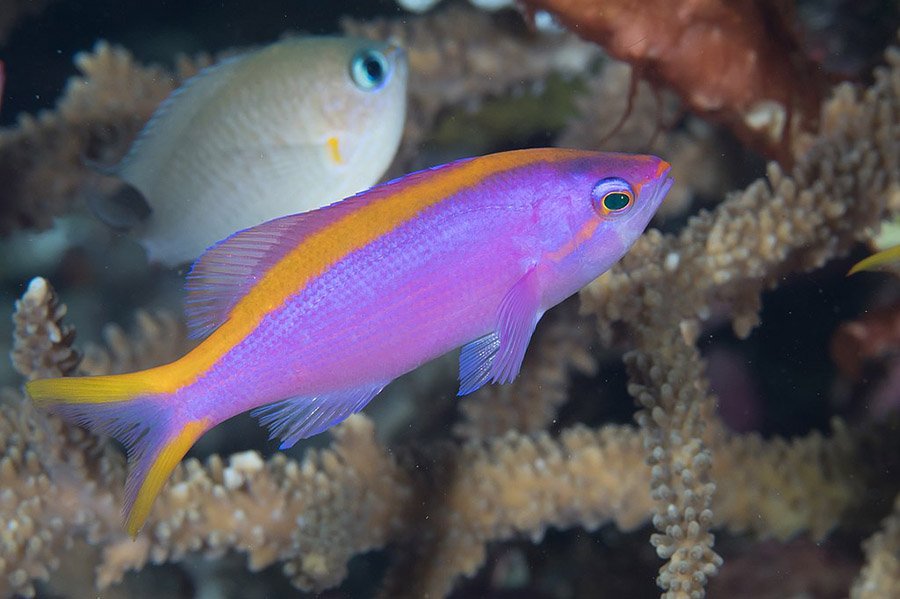
- Scientific name: Pseudanthias tuka
- Type of animal: Fish
- Where found: Indo-Pacific Ocean
The Yellowstriped Fairy Basslet is a stunning and vibrantly colored marine fish found in the Western Pacific Ocean, specifically in the waters around the Philippines, Indonesia, and the Great Barrier Reef in Australia. This eye-catching species belongs to the Serranidae family and is a popular choice among reef aquarium enthusiasts due to its striking appearance and small size.
The Yellowstriped Fairy Basslet displays sexual dimorphism, with males boasting a rich purple or violet body color contrasted by bright yellow stripes, while females are mostly orange with a single yellow stripe. The males can reach a maximum length of around 12 centimeters, whereas females are slightly smaller.
These fish are found at depths of 25 to 40 meters, predominantly around coral reefs, where they feed on zooplankton. They are known to be schooling fish, often aggregating in large groups, with a single dominant male overseeing a harem of females.
Interestingly, the Yellowstriped Fairy Basslet is a protogynous hermaphrodite, meaning that females can change their sex to male when the dominant male dies or is removed from the group.
Pacific Purple Sea Urchin
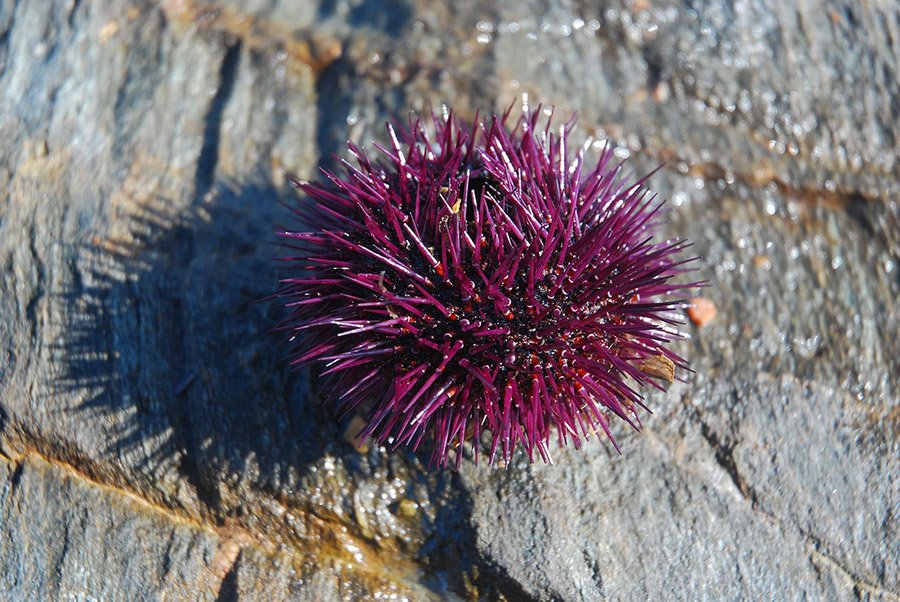
- Scientific name: Strongylocentrotus purpuratus
- Type of animal: Echinoderm
- Where found: North America’s Pacific Coast
The Pacific purple sea urchin (Strongylocentrotus purpuratus) is a widely distributed echinoderm found along the Pacific coast of North America, ranging from Alaska to Baja California. This fascinating species plays a crucial role in shaping the underwater ecosystem by maintaining the balance between kelp forests and the organisms that inhabit them.
The Pacific purple sea urchin is characterized by its vivid purple color and spherical body, which is covered in sharp spines that serve as both protection and a means of locomotion. This species typically measures between 5 to 10 centimeters in diameter.
These sea urchins are grazers that primarily feed on algae, including giant kelp, which is important for controlling the growth of these large marine plants. However, overgrazing of kelp by sea urchins can lead to the formation of “urchin barrens,” which are areas devoid of kelp forests that support diverse marine life.
The Pacific purple sea urchin is not only ecologically significant but also economically valuable, as its gonads, known as “uni,” are considered a delicacy in many cultures. The species has also gained attention in the scientific community due to its use as a model organism for developmental and evolutionary biology research.
Violet Ground Beetle
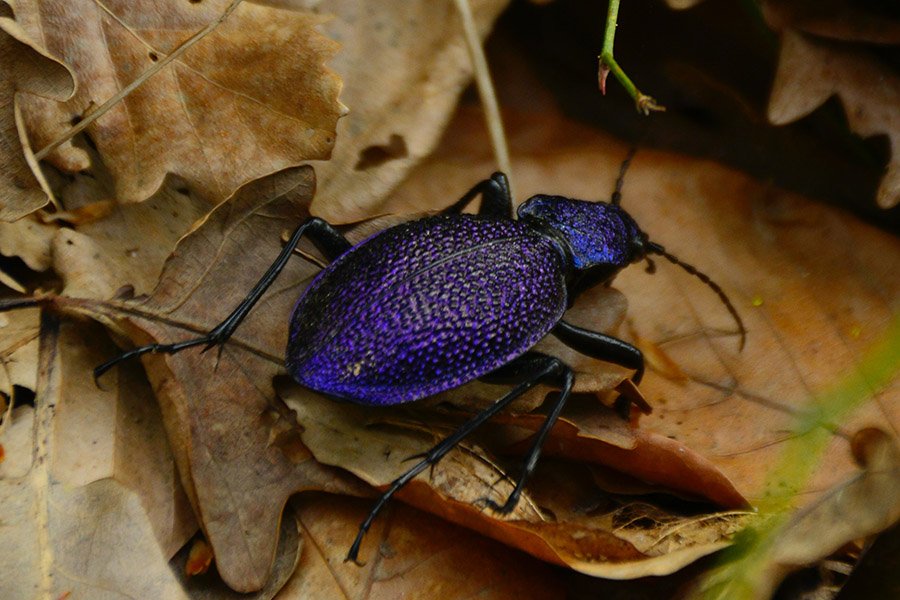
- Scientific name: Carabus violaceus
- Type of animal: Insect
- Where found: Europe, Japan
The violet ground beetle (Carabus violaceus) is a strikingly colorful species of ground beetle found throughout Europe, as well as in parts of Asia. Its iridescent violet or purplish-blue elytra (hardened front wings) and contrasting metallic green thorax make this beetle a visually captivating creature.
Measuring between 20 and 30 millimeters in length, the violet ground beetle is known for its agility and speed, making it an efficient predator in its environment. Its diet consists of various invertebrates, including slugs, snails, and small insects, which it hunts mainly during the night.
This species inhabits a variety of habitats, such as woodlands, hedgerows, gardens, and grasslands. It prefers damp environments and can often be found under stones, logs, and leaf litter.
The violet ground beetle is considered beneficial to gardeners and farmers, as it helps control populations of pests like slugs and snails.
Magnificent Sea Anemone
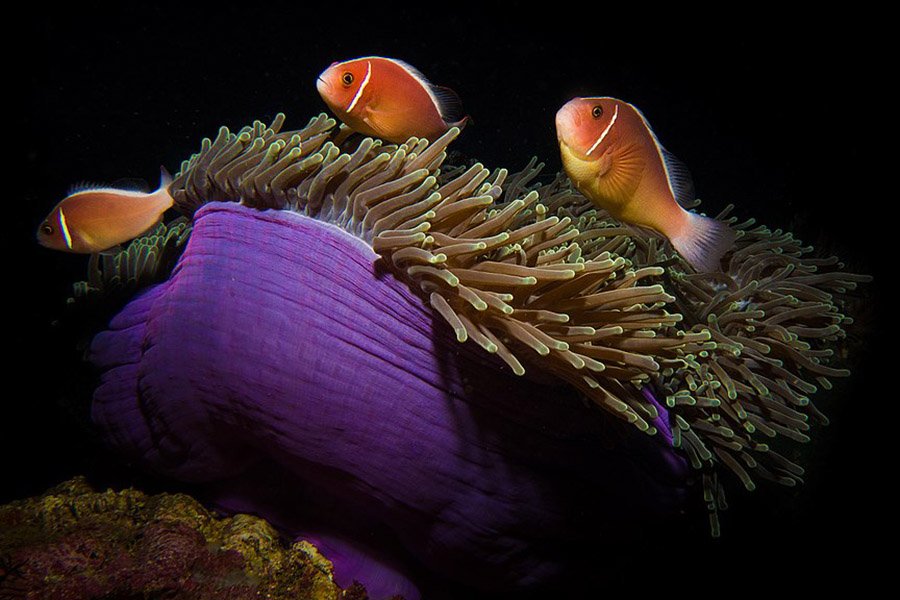
- Scientific name: Heteractis magnifica
- Type of animal: Cnidarian
- Where found: Indo-Pacific Ocean
The magnificent sea anemone (Heteractis magnifica) is an eye-catching species of sea anemone found in the warm, shallow waters of the Indo-Pacific region. It can be identified by its large size, often reaching a diameter of up to one meter, and its vibrant colors, which range from purple and blue to brown and green.
This anemone is often associated with clownfish, as they share a mutualistic relationship: the anemone provides protection to the clownfish from predators, while the clownfish brings food to the anemone and helps remove debris from its tentacles. The anemone’s tentacles contain stinging cells called cnidocytes, which are used to capture prey and deter predators.
The magnificent sea anemone is predominantly found on coral reefs, where it anchors itself to rocks or dead coral, and can adjust its position to optimize exposure to sunlight. This is important because the anemone harbors photosynthetic algae called zooxanthellae, which provide the anemone with nutrients through photosynthesis.
The magnificent sea anemone is an important part of the coral reef ecosystem, contributing to the overall diversity and health of these vital marine environments.
Spanish Shawl
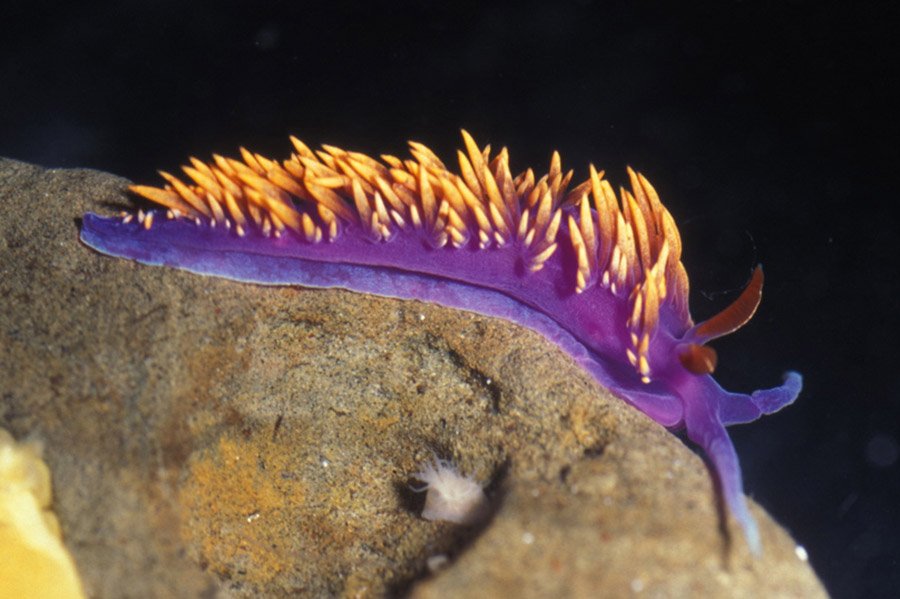
- Scientific name: Flabellinopsis iodinea
- Type of animal: Mollusk
- Where found: North America’s Pacific Coast
The Spanish shawl (Flabellinopsis iodinea), also known as the purple aeolid, is a vibrant and eye-catching species of nudibranch, a type of sea slug, found in the Eastern Pacific, from British Columbia to Baja California. This marine creature is easily identifiable due to its striking purple body, complemented by the brilliant orange-red cerata on its back.
The Spanish shawl ranges in size from 2 to 7 cm and is commonly found in the intertidal zone and subtidal waters, down to depths of 30 meters. It feeds primarily on the hydroid Eudendrium ramosum, which contains stinging cells that the Spanish shawl is able to store in its cerata for its own defense against predators.
Interestingly, the vibrant pigments of the Spanish shawl are derived from its diet; as it consumes more Eudendrium ramosum, its coloration becomes more vivid. The Spanish shawl is also a hermaphrodite, possessing both male and female reproductive organs, which allows it to reproduce more efficiently.
The Spanish shawl’s unique beauty and fascinating biology make it a popular subject for underwater photographers and marine enthusiasts alike.
Orchid Dottyback
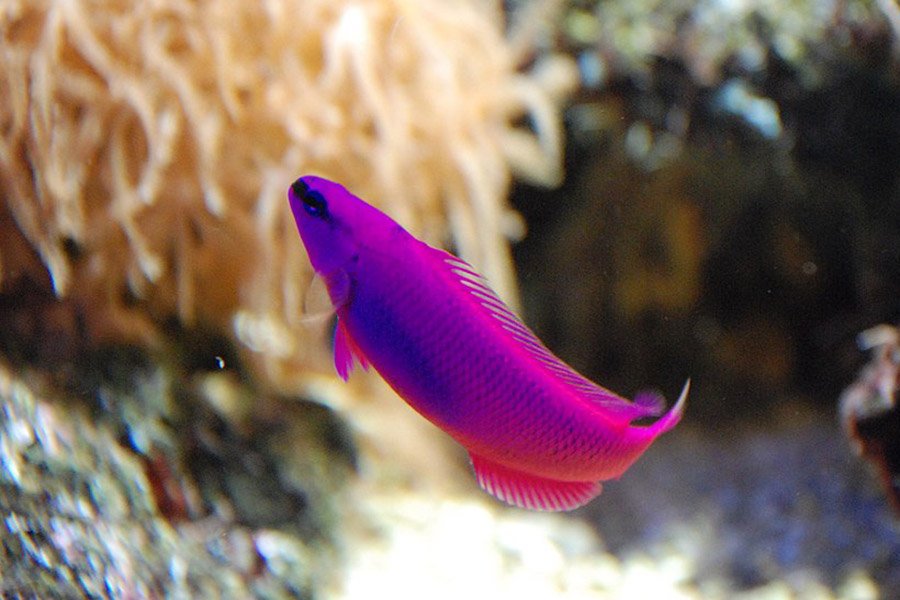
- Scientific name: Pseudochromis fridmani
- Type of animal: Fish
- Where found: Red Sea
The Orchid Dottyback (Pseudochromis fridmani) is a small and strikingly colored marine fish native to the Red Sea. This species belongs to the Pseudochromidae family and is known for its vibrant purple or lavender hue, which contrasts with its dark dorsal stripe. The orchid dottyback typically grows to a length of around 3 inches (7.5 cm) and is a popular choice for home aquariums due to its attractive appearance and manageable size.
In the wild, the orchid dottyback inhabits rocky reef environments and is often found hiding in crevices or among coral formations. It is a territorial and aggressive species, especially towards other dottybacks and smaller fish. The orchid dottyback is carnivorous, feeding on a diet of small invertebrates, such as shrimp and planktonic crustaceans.
Orchid dottybacks are protogynous hermaphrodites, meaning that they are born as females and may change sex to male under certain environmental conditions, such as a lack of males in the population. This reproductive strategy helps ensure a greater chance of successful breeding.
The orchid dottyback’s unique appearance and fascinating biology make it a highly sought-after species in the aquarium trade and a delight for marine enthusiasts.
Purple Harlequin Toad
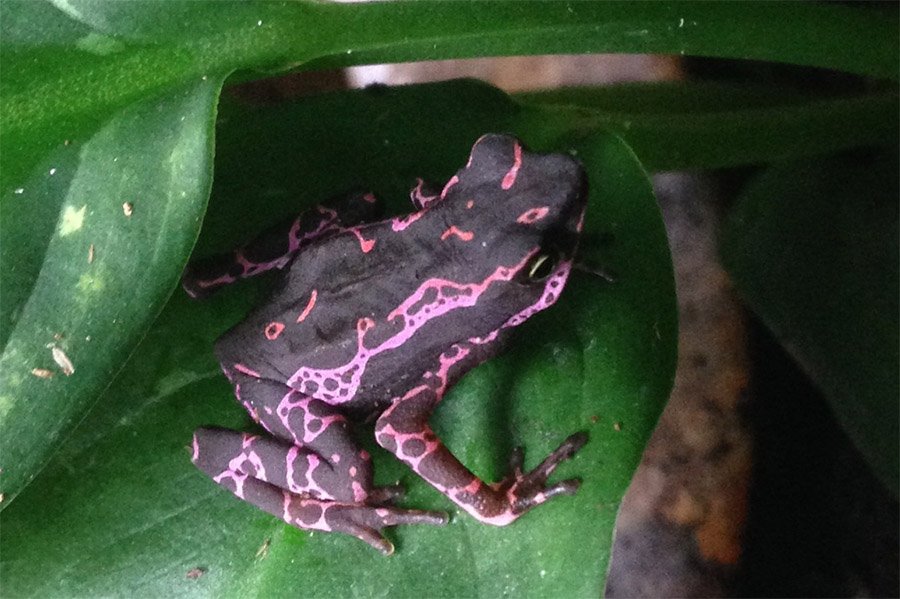
- Scientific name: Atelopus barbotini
- Type of animal: Amphibian
- Where found: French Guiana
The Purple Harlequin Toad (Atelopus barbotini) is a captivating amphibian species belonging to the Bufonidae family. Formerly considered part of the Atelopus spumarius species, it is now recognized as a distinct species or possibly a group of related species.
These toads are native to the highlands of French Guiana, and possibly Suriname, and showcase a stunning coloration, making them a popular subject for enthusiasts.
Adult Purple Harlequin Toads grow up to 3.5 inches in length and thrive in temperatures ranging between 70-78°F. Their diet primarily consists of insects, including pinhead crickets and flightless fruit flies.
The Atelopus genus, which includes the Purple Harlequin Toad, has been significantly affected by amphibian declines, with around 70% of species in the genus at risk. Conservation efforts are essential to ensure the survival of these magnificent creatures in their natural habitats.
Violet Sea Snail

- Scientific name: Janthina janthina
- Type of animal: Mollusk
- Where found: Temperate and tropical oceans worldwide
The Violet Sea Snail is a captivating gastropod mollusk found in warm and temperate ocean waters around the world. This small sea snail, belonging to the family Janthinidae, is known for its vibrant purple-colored shell and unique way of life.
The Violet Sea Snail is a pelagic species, meaning it spends its entire life adrift on the ocean’s surface. It creates a raft made of a foam-like substance to float on the water, which it uses to catch its primary food source, the by-the-wind sailor (Velella velella), a small hydrozoan.
The violet sea snail’s shell is delicate and thin, and its color can range from deep violet to a lighter lilac hue. Interestingly, the snail’s soft body is also tinted purple due to the pigments from its prey.
While not considered endangered, the Violet Sea Snail’s unique biology and lifestyle make it an important part of the marine ecosystem.


